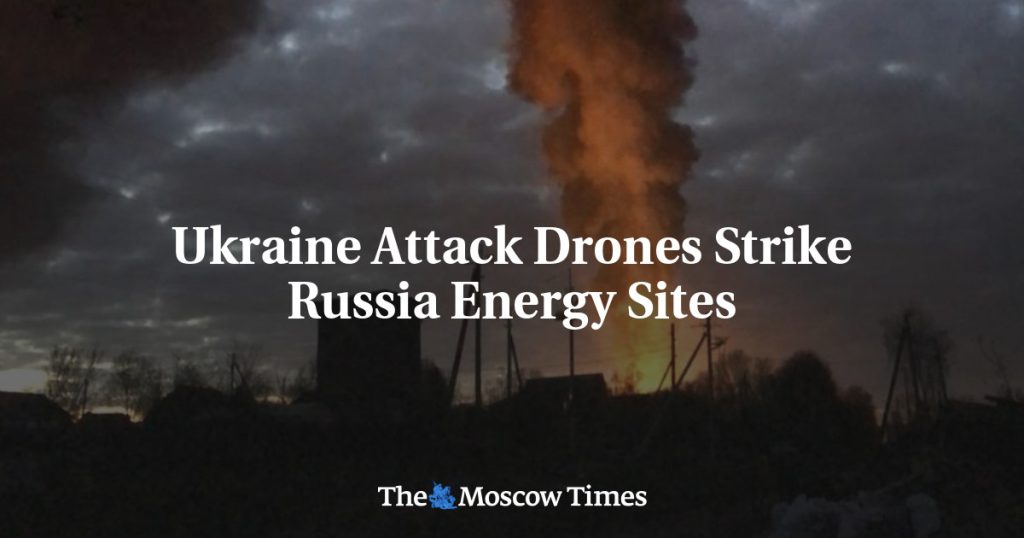In recent weeks, Ukraine has escalated its aerial attacks on Russian energy facilities in an effort to disrupt Moscow’s military supply chain and limit its ability to launch further offensives in Ukraine. On Wednesday, Ukraine launched drone attacks on oil facilities in western Russia, according to defense sources in Kyiv. The regions of Smolensk and Lipetsk were targeted in the attacks, with fires breaking out at civilian energy infrastructure sites. The attacks were carried out by drones from the Security Service of Ukraine (SBU), with two oil depots in the Smolensk region reportedly being destroyed.
Following the attacks, officials in the western Russian regions of Smolensk and Lipetsk confirmed the drone strikes, but reported that no one was injured in the attacks. Smolensk regional Governor Vasily Anokhin took to social media to condemn the attacks and stated that fires had erupted at the targeted facilities. Lipetsk Governor Igor Artamonov also confirmed that the industrial zone in the region had been targeted, but emphasized that residential neighborhoods were not affected by the attacks. The Ukrainian defense sector source claimed that the drones had destroyed two oil depots belonging to the Russian state-controlled energy giant Rosneft, which stored a significant amount of fuel.
The Ukrainian government justified the drone attacks as a legitimate response to Russian aggression, citing Moscow’s systematic attacks on Ukrainian energy infrastructure that had caused lasting damage to critical facilities. The source in the Ukrainian defense sector emphasized that the facilities targeted by the drones were considered legitimate targets and that Ukraine would continue to carry out such bombardments. In recent months, Ukraine has claimed responsibility for a series of strikes on Russian refineries and oil storage facilities, not only in border regions like Smolensk but also in territories hundreds of kilometers from the border, indicating a strategic shift in Ukraine’s tactics.
The drone attacks on Russian oil facilities represent a new phase in the conflict between Ukraine and Russia, as Kyiv seeks to disrupt Moscow’s ability to wage war in Ukraine by targeting critical energy infrastructure. By destroying oil depots and pumping bases, Ukraine aims to limit Russia’s military capabilities and logistics, thereby weakening its offensive capabilities in Ukraine. The attacks on Smolensk and Lipetsk highlight Ukraine’s determination to push back against Russian aggression and to demonstrate its ability to strike deep into Russian territory. While the attacks were condemned by Russian officials, Ukraine views them as necessary measures to defend its sovereignty and deter further Russian aggression.
The escalation in drone attacks on Russian oil facilities underscores the high stakes in the conflict between Ukraine and Russia, with both sides intensifying their efforts to gain the upper hand. As Russia continues its systematic attacks on Ukrainian energy infrastructure, Ukraine has responded with its own offensive operations targeting Russian oil facilities. The decision to launch drone attacks on oil depots reflects Ukraine’s determination to confront Russian aggression head-on and to disrupt Moscow’s military operations in Ukraine. The attacks also serve as a warning to Russia that Ukraine will not hesitate to take bold measures to defend its sovereignty and territorial integrity.
Looking ahead, the drone attacks on Russian oil facilities are likely to further strain relations between Ukraine and Russia, escalating the conflict and potentially leading to further retaliatory measures. As Ukraine continues to target Russian energy infrastructure, Moscow may respond with increased military aggression, leading to a dangerous escalation of hostilities. The international community will be closely monitoring the situation and urging both sides to exercise restraint and seek a peaceful resolution to the conflict. The drone attacks on Russian oil facilities highlight the volatile and unpredictable nature of the conflict between Ukraine and Russia, with the potential for further violence and instability in the region.


